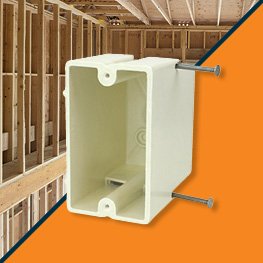
When planning a project, you’re going to need electrical boxes. They are part of the construction code, and they’re important for function and safety. They’re simply not something that can be skipped.
As far as the project goes, you’re likely to need electrical enclosures for indoor and outdoor applications. It’s important to think about the key differences between these applications when you are sourcing and pricing your enclosures. Quite obviously, these two types of enclosures are going to be different, and those differences will impact price and performance.
Toughness
Outdoor and indoor electrical boxes live very different lives, and their work environments present a major reason why they are built differently.
Outdoor boxes have to survive the weather. That means they cannot corrode in water. They have to stand up to wind, rain, hail, and sunlight. Considering the rough conditions, there are a lot of materials that are not suited to the brutal conditions that often dominate the great outdoors.
Meanwhile, indoor electrical boxes are usually protected by exterior walls and drywall. They shouldn’t be exposed to any weather problems during their lifespan but need to adhere to safety codes. Ultimately, there are a lot more viable materials for indoor boxes.
Adjustability
An adjustable box is one that can change its hanging depth. Typically, there is a screw that you can turn, and when you do, it will push the box further from the hanging structure, or it will draw the box closer to that structure.
Interior boxes are often added in the middle of construction. They have to go inside the walls. Making them adjustable allows electricians and contractors to adapt to variable wall conditions. If you install the boxes while only the studs are up and the wall finish has not yet been selected, the box has to be able to adjust to the unknown wall depth that will eventually be installed.
Outdoor boxes tend to go on finished structures and walls. You know what you’re dealing with as far as hanging depth goes, so the boxes don’t need to be adjustable.
Scale
Buildings usually don’t use as many outdoor electrical boxes as interior boxes. Indoor boxes are there for every outlet, switch, junction, and more. For a single-family dwelling, there is usually only one outdoor box (and many such buildings don’t have any outdoor boxes).
Even with apartment buildings, you are expecting to use a lot more indoor boxes than outdoor boxes. What that means is that indoor boxes are usually going to represent a much larger portion of the budget. You want indoor box pricing to be more efficient and scalable in order to save a lot more money over the course of the project.
Most of the differences between indoor and outdoor residential electrical boxes are intuitive. If you can work out the specifications that you need for each, it’s much easier to shop efficiently. You can get customizations where you need them, you can aim for the best materials for each specific use, and you can optimize your budget without sacrificing enclosure quality.
